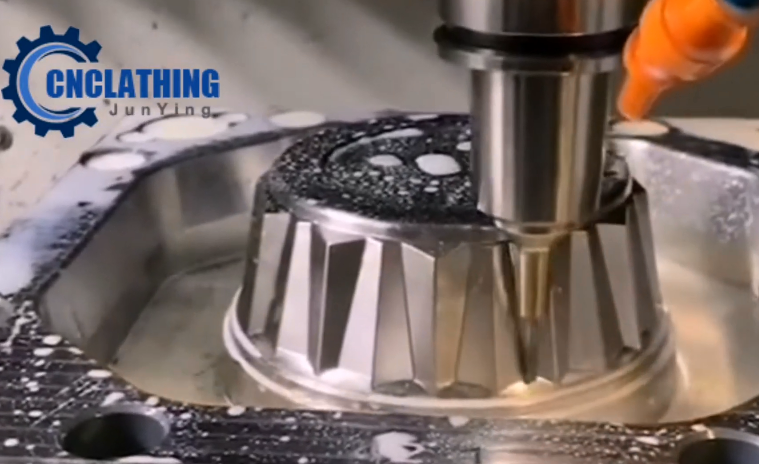What is the difference between CNC milling and CNC turning is a frequently asked question, then what aspects are the main points? Milling vs turning, which CNC machining process should you use? Follow us CNClathing.com to get into the topic.

Turning Process and Milling Process
Turning process is to turn the rotating workpiece with linear moving cutting tool.
Features and Benefits of CNC Turning
1)Easy to ensure the position accuracy for each surface of CNC turning parts
2)The cutting process is smooth, avoid inertia force and impact force, allows large cutting amounts and high speed turning, improves productivity
3)Suitable for nonferrous metal parts finishing
4)Simple cutting tools
Milling process is a main plane machining method , which refers to cutting metal workpieces with a circular multi-edge tool. In milling process, the tool rotates and workpiece is fixed.
Features and Benefits of CNC Milling
1)The teeth of milling cutter participate in intermittent cutting periodically
2)The cutting thickness of each tooth during the cutting process is changing
What are the Differences Between CNC Milling and CNC Turning?
1)Motion path of cutting tool and workpiece
CNC Turning: the workpiece rotates and the turning cutter moves in a straight line or curve.
CNC Milling: the milling cutter rotates and the workpiece moves in a straight line or curve.
2)Machines
CNC Turning: use CNC lathes or turning machines, which can also be used for the processing including drilling, reaming, tapping, and knurling.
CNC Milling: use CNC mills or milling machines, which can process flat surface(horizontal, vertical), groove (keyway, T-slot, dovetail), gear, spiral surface (thread, spiral groove) and various curved surfaces.
3)Capabilities or Uses
CNC Turning: mainly used for machining outer and inner cylindrical or conical surfaces, like shafts, bushes, sleeves, etc.
CNC Milling: for machining flat and irregular surfaces, such as groove, slots, gear, thread and special forming surfaces of die, can create complex shapes and features.
4)Advantages
CNC Turning: when processing the outer circle surface is better
CNC Milling: when processing large flat surface is better
5)Tool Features
CNC Turning: the cutting tool is single point
CNC milling: the cutting tool is multi-point
6)Cutting
CNC Turning: continuous cutting, cutting tool remaining in contact with workpiece
CNC Milling: intermittent cutting, cutting tool teeth engages and disengages
7)Chips
CNC Turning: produce fragmented, discontinuous, or continuous chips
CNC Milling: always produces discontinuous chips
Junying is specialized in OEM precision CNC milling services and CNC turning services, as well as machined parts manufacturing from rapid prototyping to large batch production run. There are lots of videos took in our machine shop pulished on our Youtube channel shows different metal machining and fabrication tenologies, if you are interested in any parts, please feel free to contact us.